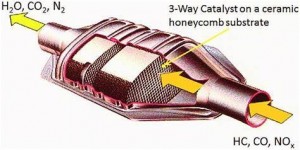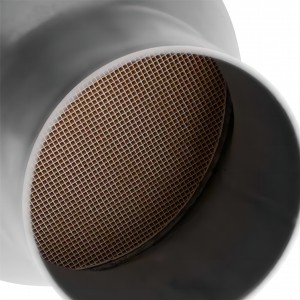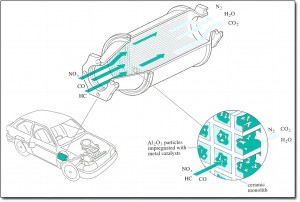The purpose of the exhaust system is to smoothly remove, clean and silence the exhaust gas generated by the engine during the combustion process from each cylinder through the three-way catalytic converter, and then discharge it into the atmosphere. The exhaust process can be divided into free exhaust phase, forced exhaust phase and inertial exhaust phase. Generally speaking, the exhaust system refers to the exhaust port connected to the combustion chamber, through the exhaust three-way catalytic converter, the middle section of the exhaust pipe to the tail section of the exhaust pipe (muffler).
According to the reciprocating actions of a car engine—intake, compression, work, and exhaust—if the exhaust system cannot quickly discharge the exhaust gas after combustion, the next intake stroke must not be able to quickly and completely inhale it. fresh air.
To improve the efficiency of the exhaust system, it is necessary to make full use of the back pressure and suction effect generated by the exhaust system during the exhaust process. The back pressure refers to the lower pressure generated by the exhaust valve after the exhaust gas is discharged from the cylinder, filtered through the three-way catalytic converter and then discharged out of the car. The back pressure indicates that the smoothness of the exhaust pipe is directly related to each structure of the exhaust system. The back pressure is not as low as possible. Low back pressure means that the obstruction of the exhaust system is small. At low and medium speeds (close to the maximum torque speed), the combusted gas mixture is discharged too smoothly, and the pressure on the piston top drops too much. Fast, so that the torque at this stage is reduced. Inhalation means that due to the generation of back pressure, the low-pressure area behind the exhaust valve will produce the effect of inhalation on the exhaust gas of the next cycle. Exhaust efficiency will be higher, less exhaust gas will remain in the cylinder, and more fresh air will enter the cylinder in response to the next cycle.
The general-purpose three-way catalytic converter is suitable for most models in the market. The three-way catalytic converter for automobiles is a very important exhaust gas purification device, but the scope of purification is limited to a certain extent, mainly for the three types Harmful substances, of course, are generally enough to deal with the exhaust gas problems encountered by car owners during driving.
CAT devoted to offer you new and trend setting exhaust systems, exhaust muffler, exhaust tips, exhaust headers, exhaust down pipes and exhaust clamp, exhaust valve and so on that will always be superior in performance, design, and craftsmanship using advanced innovative technology. With the experience, knowledge, and passion, they are committed and value their customers and the industry with nothing but the best and up to date products.
There is no purification ability for engine carbon deposits. It is not that the three-way catalytic converter has no ability to purify. It can be said that there is no device that can clean up engine carbon deposits, because carbon deposits are solid free carbon particles. These substances can only capture mobile phones and Just deal with it.
Carbon monoxide, nitrogen oxides and hydrocarbons are among the hundreds of emissions in vehicle exhaust, which are the most serious pollutants to air quality. The damage to plants caused by acid rain is precisely due to the existence of these substances, and they are harmful to human breathing. The system and the neuroimmune system can also cause damage, so it is even more important to deal with these harmful substances.
Its operating principle is to promote the reaction of three harmful substances in the exhaust gas with the three noble metals in the catalyst through high temperature, and change the harmful substances into harmless substances through oxidation and reduction, so as to minimize the pollution of exhaust gas.
When the exhaust gas is discharged from the engine to the exhaust manifold, the temperature is about 900°C, and it is still about 600°C when it reaches the three-way catalytic converter. Therefore, it is not an exaggeration to say that high temperature is the basis of the catalytic reaction, but the temperature cannot Exceeding the standard, because after a long time, even if the catalytic converter is not worn normally, it will cause the internal melting of the catalytic converter due to the long-term high temperature.
Post time: Mar-17-2023










